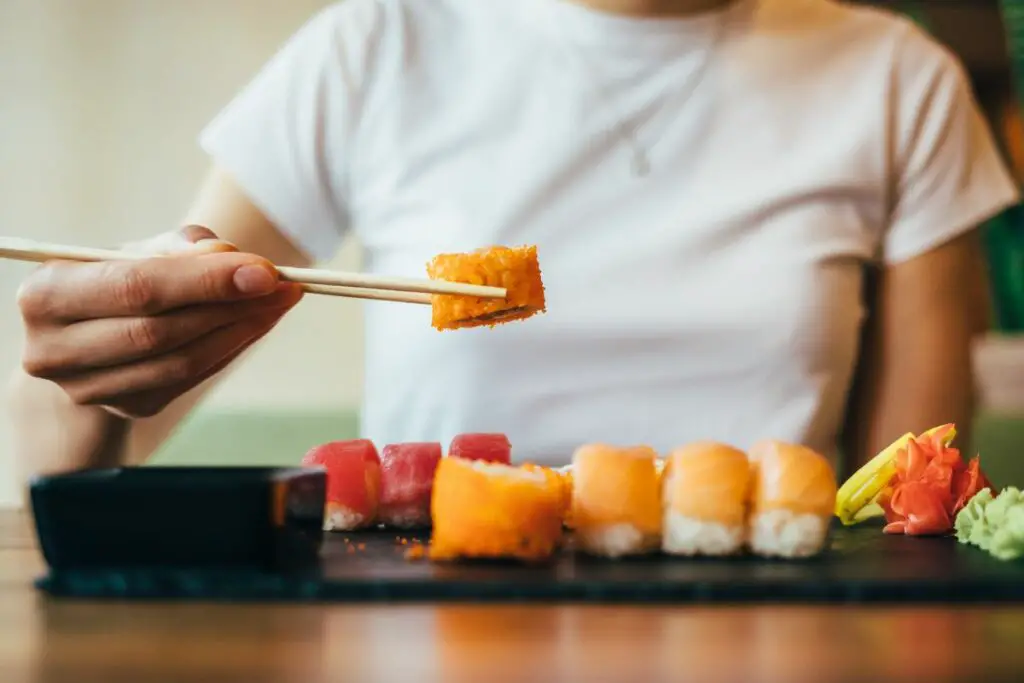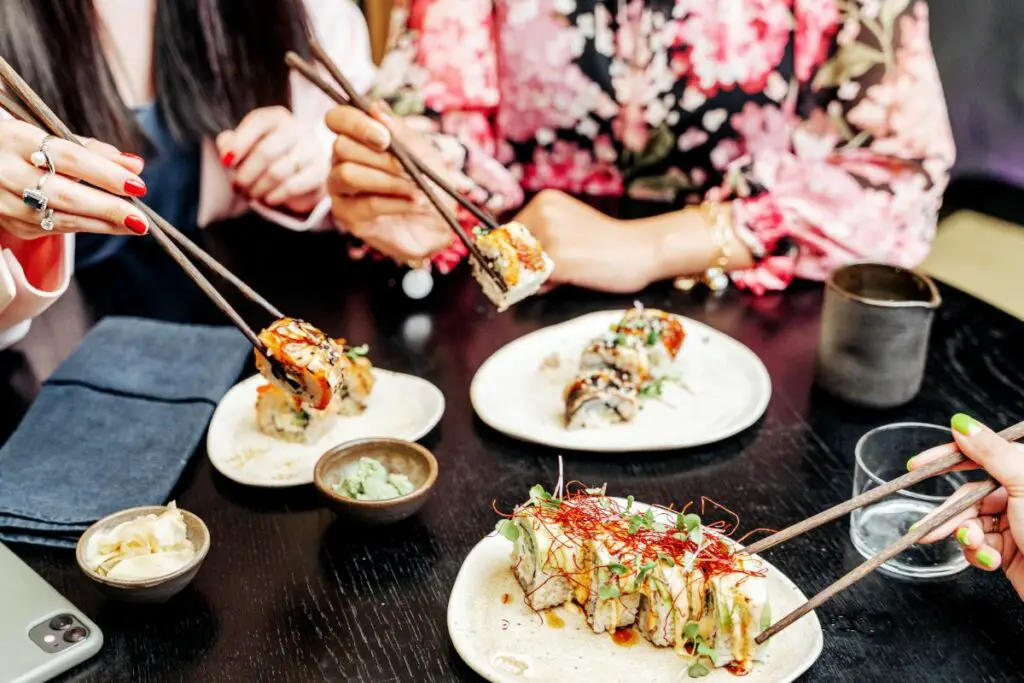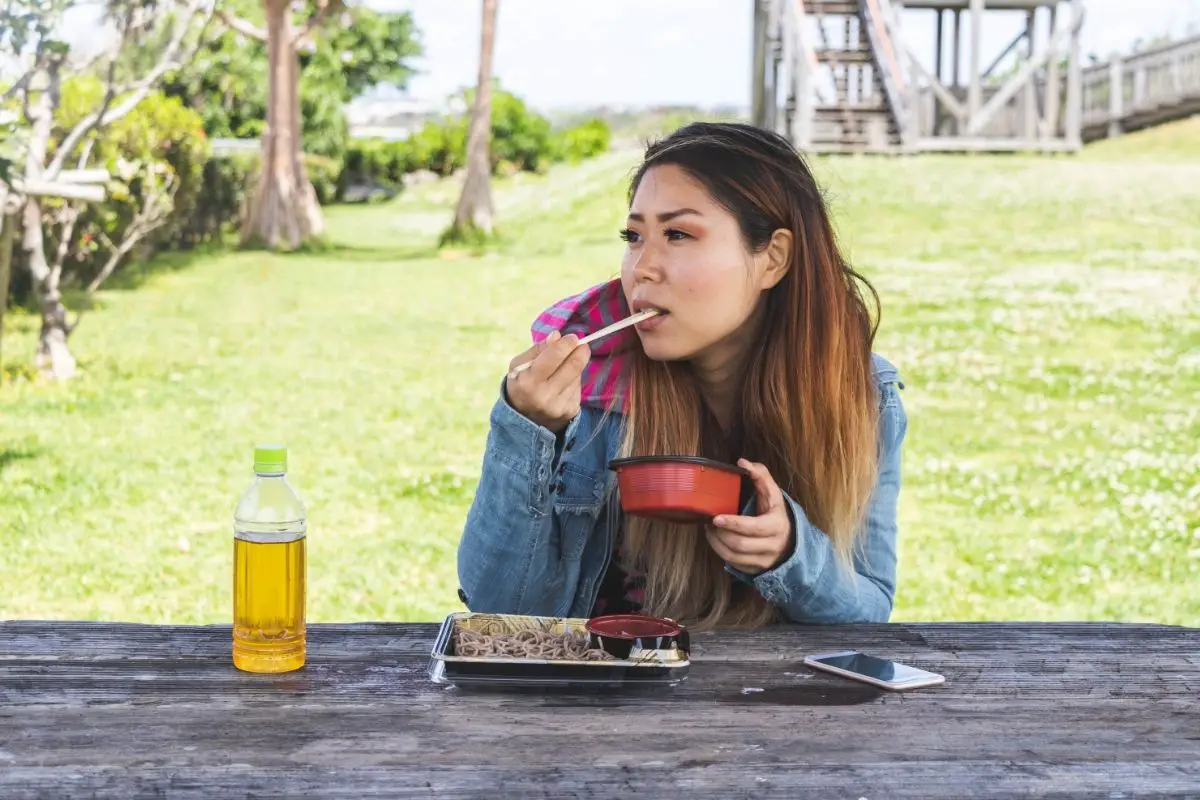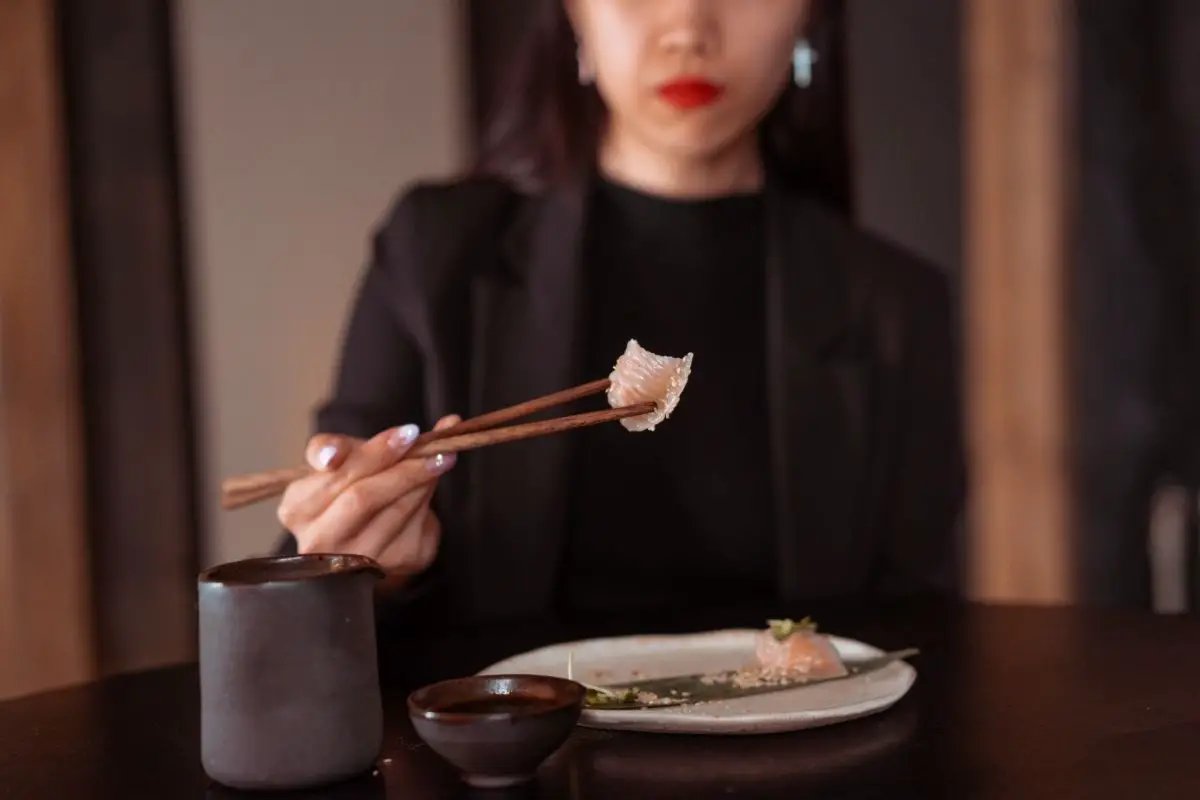In Japan, chopsticks are referred to as Ohashi and are an integral part of Japanese culture. In addition to being used as utensils, they also represent a Japanese tradition of courtesy and manners.

There are still some standards that are essential to adhere to even though chopstick etiquette in Japan isn’t as rigid as it once was.
It’s best to brush up on your chopstick techniques and be prepared to eat in a variety of settings, from informal to formal, because bad eating manners can make those around you uncomfortable and offended.
You’ll need to use chopsticks at some point if you’re going to travel to or work in Japan. In this article, we’ll go through the basic rules of Japanese chopstick etiquette so you can use chopsticks with confidence.
How To Hold Your Chopsticks In Japan
If you’ve never used chopsticks, you should definitely learn how to use them before visiting Japan. When dining out, it’s unlikely that you’ll have access to utensils that you’re used to, like a knife and fork, but by following these steps and some practice, you’ll be a chopstick pro in no time:
- Start by holding the upper chopstick about one-third of the way up from the top, like a pencil.
- Next, grip the second chopstick with the base of your thumb while placing it against your ring finger. It should be pointing in the same direction as the first chopstick.
- Using your thumb, index, and middle fingers, move the upper chopstick. Use the lower and upper chopsticks to grab the food.
What To Not To Do When Using Chopsticks In Japan

1. Do Not Pass Food From Chopstick To Chopstick
Sharing food by passing it with your chopsticks and having someone else take it with theirs is one of the worst mistakes you can make.
Chopsticks are used to distribute the deceased’s bone fragments from person to person during funerals in Japan, therefore doing so is viewed as a bad omen and disrespectful (to find out what other countries use chopsticks, read here). Move the food to a plate for someone else to pick up from if you want to share it with them using chopsticks.
2. Do Not Place Chopsticks Across Your Bowl
During a meal, crossing your bowl with your chopsticks signals to the chef and your dining companions that you no longer want your dish. This can be disrespectful if you haven’t finished eating. Keeping your chopsticks straight rather than crossed when they’re resting is also polite.
If chopstick rests aren’t provided, you can put your chopsticks on the wrapper they came in and put them inside when you’re done eating. Place your chopsticks along the left side of your dish if they are not disposable.
3. Do Not Place Chopsticks Vertically In Your Food
Chopsticks being placed vertically in a bowl is one of the most significant and widespread taboos. A bowl of rice is traditionally left at funerals in Japan, with two chopsticks positioned vertically in the middle. It’s considered unlucky to put chopsticks in a bowl upright at the dinner table
Use the chopstick rests next to your meal because, despite its reputation for bad luck, this chopstick rule is followed in many Asian nations. Disposable chopsticks can also be placed on their packaging.
4. Do Not Rub Chopsticks Together
To remove splinters from cheap chopsticks, people rub them together. This frequently occurs when using disposable chopsticks, known as waribashi in Japan, which are split in half before use.
Chopsticks that are rubbed together suggest that the guest believes they have given you subpar chopsticks. Your host or chef might interpret this as an insult.
5. Do Not Stab Your Food With Chopsticks
Never stab food with one chopstick and then bring it to your mouth. This is rude, disrespectful, and just plain bad manners. Always try to use both chopsticks.
To make sure the dish is cooked through, some people like to poke it with chopsticks. This may come across as impolite because you don’t believe your host has adequately cooked your meal.
Japanese cuisine is frequently served in little portions that are easy to pick up with chopsticks. Avoid the impulse to stab the food, even if it continues evading you!
6. Do Not Hover Above Dishes
Chopstick use in Japan should be deliberate. Hovering your chopsticks above the food you intend to eat is considered impolite and even greedy.
While choosing what to eat, try not to move your hand or chopsticks from dish to dish. Instead of only taking your favorites every time, it is best to sample a bit of each dish.
Generally, there is enough food for everyone, so enjoy it and, if you’re stuck on what to eat next, pick something at random.
You’re welcome to take from the communal dishes, but only if you use the utensils that are provided. Some people flip their chopsticks around to eat food from a shared plate with the side that hasn’t been in contact with their lips.
To transfer food from a shared dish, it is customary to use extra chopsticks. When in doubt, keep an eye on what other people do.
8. Do Not Point With Chopsticks
Similar to pointing a finger at someone, using chopsticks to express something is disrespectful. Waving chopsticks in the air whilst talking is also rude, so make sure to avoid doing this.
If you tend to speak to the table with your hands, remember to set your chopsticks down before you begin.
9. Do Not Move Dishes With Chopsticks
Don’t use your chopsticks to move your dish or anything else besides food. It is considered impolite to move your plates and bowls with your chopsticks, and you run the risk of making a mess if you spill something.
Moreover, you shouldn’t use the hand that is holding your chopsticks to lift a bowl. Just keep in mind to move plates with your free hand if you’re having trouble remembering all the rules. A bowl should also be brought closer to you by making a two-handed grab for it.
10. Do Not Wash Chopsticks In Soup
Never wash your chopsticks at the dinner table with a bowl of soup or any other liquid. This is considered to be very bad table manners.
While using them, you should try to keep them clean. If you use chopsticks properly, they will stay relatively clean throughout your entire meal and you will only need about an inch of them.
11. Don’t Scoop Rice Into Your Mouth With Chopsticks
It’s acceptable to bring the rice bowl close to your mouth, but you shouldn’t scoop it into your mouth. You should have no trouble using chopsticks to pick up the rice because Japanese rice is often fairly sticky.
However, it is acceptable to lift a bowl of soup to your mouth and eat it with chopsticks. Even slurping noises are okay and are actually considered to be a polite indication that you’re enjoying your meal.
Final Thoughts
The rules of chopstick etiquette in Japan can be overwhelming, however, with a bit of practice and mindfulness, you’ll be able to master eating with chopsticks in the most polite way possible.








